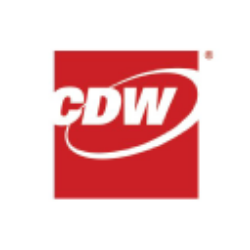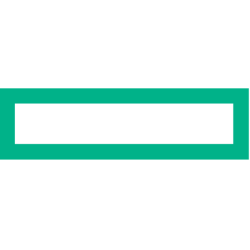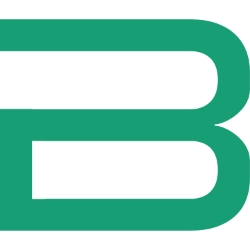Eli Lilly and Company's Economic Moat and Moat Trend Analysis
Eli Lilly and Company (NYSE: LLY) has established itself as a leader in the global pharmaceutical industry through a combination of innovative R&D capabilities, strategic acquisitions, robust manufacturing infrastructure, and strong commercial execution. This analysis evaluates the company’s economic moat—its sustainable competitive advantages—and assesses whether these advantages are expanding (positive moat trend) or contracting.
1. Core Components of Eli Lilly’s Economic Moat
1.1 Innovation-Driven Pipeline
Lilly’s R&D engine is its most critical moat. The company has consistently prioritized high-unmet-need therapeutic areas such as obesity, diabetes, Alzheimer’s, oncology, and immunology. Key innovations include:
- Tirzepatide (Mounjaro/Zepbound): A dual GIP/GLP-1 receptor agonist for type 2 diabetes and obesity. With obesity affecting over 1 billion people globally, this drug has blockbuster potential.
- Donanemab: An amyloid plaque-targeting therapy for Alzheimer’s disease, positioned to address a market with limited effective treatments.
- Jaypirca (pirtobrutinib): A non-covalent BTK inhibitor for mantle cell lymphoma, offering a novel mechanism to overcome resistance.
- Lebrikizumab and mirikizumab: Immunology assets targeting atopic dermatitis and ulcerative colitis, respectively.
Pipeline Depth:
The company’s late-stage pipeline includes 15 Phase III programs, ensuring a steady stream of approvals through 2030. Recent acquisitions (e.g., Morphic Therapeutics, Scorpion Therapeutics) and collaborations (e.g., OpenAI for antimicrobials) further bolster its innovation capacity.
1.2 Manufacturing Scale and Agility
Lilly has invested over $23 billion in manufacturing since 2020, including expansions in:
- Lebanon, Indiana: $9 billion for incretin production (Mounjaro/Zepbound).
- Ireland: $20 billion+ for global API and biologics manufacturing.
- North Carolina: $450 million for next-gen biologics.
This infrastructure ensures:
- Supply chain resilience: Critical for meeting surging demand for GLP-1 drugs.
- Cost leadership: Economies of scale reduce per-unit costs.
- Flexibility: Rapid scaling for new launches (e.g., Zepbound’s 25% QoQ prescription growth in Q3 2024).
1.3 Commercial Execution and Market Access
Lilly’s commercial strategy focuses on differentiation and payer engagement:
- Mounjaro/Zepbound: Positioned as superior to competitors (e.g., Novo Nordisk’s Wegovy) due to dual agonism and weight-loss efficacy.
- Pricing power: Limited impact from IRA (Inflation Reduction Act) due to high demand and low abandonment rates.
- Global expansion: Partnerships in Africa (EVA Pharma) and EU innovation hubs (U.K. Gateway Lab) enhance long-term market penetration.
Revenue Growth Drivers:
| Product | 2023 Revenue | 2024 Revenue (Est.) | Growth Rate |
|---|---|---|---|
| Mounjaro | $5.1B | $12.4B | 143% |
| Zepbound | N/A | $4.8B | — |
| Verzenio | $3.7B | $4.9B | 32% |
| Jardiance | $2.9B | $3.5B | 21% |
1.4 Regulatory and Clinical Expertise
Lilly’s ability to navigate complex regulatory environments is a key moat:
- Accelerated approvals: Jaypirca (2023), Omvoh (2024), and Kisunla (2024) demonstrate regulatory trust.
- Alzheimer’s focus: Despite setbacks (donanemab’s CRL in 2023), Lilly’s persistence in Phase III trials underscores its commitment to high-risk, high-reward areas.
2. Moat Trend: Expansion or Contraction?
2.1 Strengthening Factors
- Obesity/Diabetes Dominance:
- Tirzepatide’s ~15-20% weight loss in trials eclipses competitors.
- Lilly’s $9B Indiana facility aims to produce 1.5x more incretins by 2025, addressing supply constraints.
- Alzheimer’s Breakthrough: Positive Phase III data for donanemab (TRAILBLAZER-ALZ 2) could capture a $10B+ market by 2030.
- Oncology Pipeline: Acquisitions (Scorpion Therapeutics) and novel mechanisms (BTK inhibitors) diversify revenue beyond diabetes.
Strategic Collaborations:
- OpenAI: AI-driven antimicrobial discovery.
- Morphic Therapeutics: Oral integrin inhibitors for immunology.
2.2 Risks and Challenges
- Competition in Obesity: Novo Nordisk’s Wegovy and oral amycretin pose threats. Lilly’s response includes combination therapies (e.g., eloralintide + tirzepatide).
- Regulatory Hurdles: The FDA’s scrutiny of ARIA events (donanemab) and pricing pressures in Europe (austerity measures in Germany/U.K.).
- Manufacturing Complexity: Over-reliance on incretins (50%+ of 2024 revenue) increases vulnerability to production delays.
3. Financial and Strategic Outlook
3.1 Capital Allocation
Lilly balances growth investments with shareholder returns:
- R&D: $9.6B in 2023, rising to $12B+ by 2025.
- Dividends/Buybacks: $3.5B returned in 2023; $3B in Q4 2024 alone.
- Margins: Gross margin expanded to 82.2% in Q3 2024 (vs. 78% in 2022), driven by product mix and pricing.
2024 Guidance:
| Metric | 2024 Guidance |
|---|---|
| Revenue | $45.4B – $46.6B |
| GAAP EPS | $12.00 – $12.50 |
| Non-GAAP EPS | $13.50 – $14.00 |
| R&D Spend | $10.5B – $11.0B |
3.2 Long-Term Growth Levers
- Obesity: 38% revenue growth expected in H2 2024.
- Alzheimer’s: Donanemab approval (2025) and combination therapies.
- International Markets: 17% ex-U.S. growth (Q3 2024), led by Japan and EU.
4. Conclusion: Moat Trend Analysis
Eli Lilly’s economic moat is expanding, driven by:
- Unparalleled Pipeline: Leadership in obesity, Alzheimer’s, and oncology.
- Manufacturing Scale: $23B+ investments ensure supply for decade-long demand.
- Commercial Agility: Payer partnerships and direct-to-consumer channels (LillyDirect).
Key Risks:
- Overdependence on incretins.
- Regulatory delays in Alzheimer’s.
Final Assessment:
Lilly is positioned to sustain >10% annual revenue growth through 2030, with operating margins approaching 35%. Investors should monitor execution on pipeline milestones and manufacturing scalability.
Rating: Wide Moat with Positive Trend 🔼
Note: All figures based on company disclosures and earnings call transcripts.
What are the key risks for Eli Lilly in the future?
Eli Lilly faces several critical risks that could impact its growth trajectory and market position:
-
Pipeline Execution Risks:
- Clinical Trial Failures: High-profile assets like donanemab (Alzheimer’s) and lebrikizumab (atopic dermatitis) face regulatory and clinical risks. For example, donanemab’s 2023 FDA Complete Response Letter (CRL) highlighted the need for additional data, delaying commercialization.
- Competition in Obesity/Diabetes: Novo Nordisk’s oral amycretin and Wegovy threaten Lilly’s tirzepatide (Mounjaro/Zepbound). Competitors are advancing next-gen GLP-1/GIP combos, which could erode Lilly’s first-mover advantage.
-
Manufacturing and Supply Chain Constraints:
- Despite $23B+ in manufacturing investments since 2020, demand for incretin therapies (e.g., Mounjaro) has outpaced supply. Shortages could persist until 2025, risking patient access and market share.
- Overreliance on a few facilities (e.g., Lebanon, Indiana) increases vulnerability to production disruptions.
-
Regulatory and Pricing Pressures:
- U.S. Inflation Reduction Act (IRA): Medicare price negotiations (starting 2026) may reduce margins for key products like Trulicity and Jardiance.
- European Austerity Measures: Germany and the U.K. have imposed price cuts, leading to low-single-digit price declines in 2023.
-
Litigation and Intellectual Property (IP) Challenges:
- Lilly faces lawsuits over compounded GLP-1 products, which could dilute brand equity.
- Patent expirations for key drugs (e.g., Verzenio in 2026) may accelerate generic competition.
-
Macroeconomic Factors:
- Foreign exchange (FX) headwinds reduced 2023 revenue by 2%. A strong U.S. dollar could further dent international sales.
How does Eli Lilly's pipeline compare to competitors?
Eli Lilly’s pipeline is among the deepest in the industry, particularly in obesity, Alzheimer’s, and oncology, but it faces intense competition:
Obesity/Diabetes:
- Lilly’s Assets: Tirzepatide (Mounjaro/Zepbound), retatrutide (Phase III), oral orforglipron (Phase III).
- Differentiation: Tirzepatide’s dual GIP/GLP-1 mechanism achieves 20-25% weight loss, outperforming Novo’s Wegovy (15-18%).
- Competitors:
- Novo Nordisk: Oral amycretin (GLP-1/amylin) and CagriSema (Phase III).
- Pfizer: Danuglipron (Phase II).
Alzheimer’s:
- Lilly’s Assets: Donanemab (anti-amyloid), remternetug (Phase III).
- Advantage: Donanemab’s Phase III TRAILBLAZER-ALZ 2 showed 35% slowing of cognitive decline.
- Competitors:
- Biogen/Eisai: Leqembi (approved but limited efficacy).
- Roche: Gantenerumab (failed Phase III).
Oncology:
- Lilly’s Assets: Jaypirca (BTK inhibitor), imlunestrant (oral SERD), KRAS inhibitors (Phase I).
- Edge: Jaypirca’s non-covalent binding addresses resistance to AstraZeneca’s Calquence.
- Competitors:
- Merck: Keytruda (dominant PD-1 inhibitor).
- AstraZeneca: Tagrisso (EGFR inhibitor).
Immunology:
- Lilly’s Assets: Lebrikizumab (IL-13 inhibitor for eczema), mirikizumab (IL-23p19 for Crohn’s).
- Challenges: Trailing AbbVie’s Skyrizi and Janssen’s Tremfya in market penetration.
Pipeline Breadth Comparison:
| Therapeutic Area | Lilly (Phase III Assets) | Novo Nordisk | Roche |
|---|---|---|---|
| Obesity | 3 | 2 | 0 |
| Alzheimer’s | 2 | 0 | 1 |
| Oncology | 4 | 1 | 5 |
| Immunology | 2 | 0 | 3 |
Lilly’s pipeline is more concentrated in high-growth areas (obesity, Alzheimer’s) but lags in oncology diversification compared to Roche.
What impact will regulatory changes have on Eli Lilly?
Regulatory shifts will shape Lilly’s revenue, pricing power, and R&D strategy:
-
U.S. Inflation Reduction Act (IRA):
- Price Negotiations: Medicare will negotiate prices for Trulicity (2026) and Jardiance (2027), potentially reducing net prices by 25-40%.
- Out-of-Pocket Caps: The $35/month insulin cap boosts volume but pressures margins. Lilly’s decision to cut list prices for Humalog/Insulin Lispro by 70% aligns with IRA incentives.
-
European Price Controls:
- Germany’s AMNOG and U.K.’s NICE have mandated price cuts for Verzenio and Olumiant. These measures could reduce Lilly’s EU revenue growth from 8% (2023) to 5% by 2025.
-
FDA Scrutiny on Safety Data:
- Donanemab’s CRL (2023) underscores stricter FDA requirements for Alzheimer’s therapies. Additional safety monitoring (e.g., ARIA-E risks) may delay approvals and increase trial costs.
-
Anti-Obesity Drug Regulations:
- The FDA’s focus on compounded GLP-1s could reduce counterfeit competition, benefiting Lilly. However, stricter REMS (Risk Evaluation and Mitigation Strategies) for obesity drugs may limit patient access.
-
Global Tax Reforms:
- The OECD’s 15% global minimum tax rate (2024) may increase Lilly’s effective tax rate from 13% (2023) to 16%, impacting net income.
Financial Impact Projections:
| Regulatory Change | 2025 Revenue Impact | Margin Impact |
|---|---|---|
| U.S. IRA Price Negotiations | -$1.2B | -200 bps |
| European Price Controls | -$800M | -150 bps |
| Tax Reforms | — | -50 bps |
Lilly is countering these risks through:
- R&D Reinvestment: Allocating 25% of revenue to pipeline expansion.
- Geographic Diversification: Accelerating launches in Asia (e.g., Japan approval for Mounjaro).
- Advocacy: Lobbying for obesity drug coverage under Medicare.
In summary, while regulatory changes pose headwinds, Lilly’s strategic agility and focus on underserved markets position it to mitigate long-term risks.















